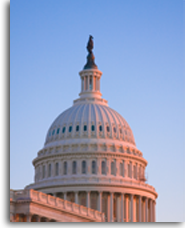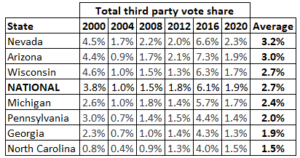How is the war in Gaza affecting public opinion of President Biden’s policy toward the conflict? The most recent polling data indicates a significant decline in young voter support, although it is unclear how these attitudes will play out a year from now. Alexander Sammon notes in “Biden Has a Youth-Vote Problem. His Israel Policy Is Making It Worse” at Slate that “A recent Quinnipiac poll underscores Biden’s disastrous standing with the youth vote. The president’s favorability rating has cratered out at an almost-unbelievable 25 percent among registered voters under 35 years old. A few weeks prior, a Washington Post–ABC poll had Trump winning voters under 35 by 20 points. (The Post’s story notes that the poll differs from others taken recently, and that it may be an outlier. It’s not the only recent presidential poll that’s made publishers raise an eyebrow.)….In 2020, 60 percent of 18-to-29-year-old voters, by far the most Democratic-voting group by age, threw in for Joe Biden….That same Quinnipiac poll found that 51 percent of voters under 35 say they disapprove of the United States’ sending weapons and military support to Israel—a much higher figure than the 28 percent of Americans who oppose such a policy. Only 21 percent of voters under 35 say they approve of Biden’s Israel policy; 42 percent of voters across all age brackets approve….A CBS News poll conducted last week came to an even starker conclusion. When asked if the U.S. should send weapons and supplies to Israel, 59 percent of respondents under 30 said it should not. An even more resounding 64 percent of those between age 30 and 44—a bracket more likely to vote that carries the whole millennial generation and part of Gen X—said the U.S. should not….Earlier this year, Gallup polling found that among Democrats, net sympathy for Palestinians outweighs net sympathy for Israelis, a change that has occurred during Biden’s time in office. The aforementioned CBS News poll shows that a slim majority of both Democrats and independents feel that the U.S. should not send weapons and supplies to Israel. Data for Progress found that 80 percent of Democrats currently believe that the “US should call for a ceasefire and a de-escalation of violence in Gaza.”
Sammon continues, “Although the data seems overwhelming on this point, the anecdotal evidence in Washington appears to mirror it. An open letter, signed by 411 congressional staffers, took the rare move of calling publicly for a cease-fire. Meanwhile, HuffPost has reported that the State Department is in turmoil over Biden’s unequivocal support for Israel. “There’s basically a mutiny brewing within State at all levels,” one department official told the outlet….those 400-odd staffers are overwhelmingly not senior-level or senior age. They’re young people expressing a widespread conviction of their generation….Look, too, at the slowly growing list of representatives sponsoring the House’s cease-fire resolution. They’re not all young, but the list includes the House’s most prominent left-wing millennial in Alexandria Ocasio-Cortez and the chamber’s only Gen Z member, Maxwell Frost….If Biden hopes to win reelection, he desperately needs to run up the score with the youth vote as he did in 2020; we can comfortably say, even 13 months from Election Day, that there are only narrow, unlikely paths back to the White House for any Democrat without that….Meanwhile, joining the congressional calls for cease-fire is hardly a safe bet. Certainly, significant percentages of the electorate would welcome that, but the same polling indicates that nontrivial percentages would also be enraged. It’s a divisive issue, and domestically, there’s no “safe” option for a U.S. president.” At The Guardian, Lauren Gambino reports that “A Gallup poll released on Thursday found that Biden’s approval rating among Democrats plummeted 11 percentage points in one month, to a record low of 75%. According to the survey, the drop was fueled by dismay among Democratic voters over Biden’s support for Israel….Meanwhile, a poll released last week by the progressive firm Data for Progress found that 66% of likely US voters strongly or somewhat agree that the US should call for a ceasefire.” Gambino adds that “So far no senator has backed a ceasefire. Warren, Sanders and several other Democratic senators have urged a “humanitarian pause” to allow aid, food and medical supplies to flow into Gaza after Israel ordered a “complete siege” of the territory.”
“Today’s polls aren’t predictive of an election that’s more than a year out,” Will Marshall writes in his article, “For victory in 2024, Democrats must win back the working class” at The Hill. “But they are indicative of how little headway the president and his party have made since 2020 on their central political challenge: enlarging their party by winning back working class voters.” Marshal, founder and CEO of the Progressive Policy Institute, adds “…it’s not unreasonable for Democrats to believe that, despite his abysmal approval ratings, Biden could yet parlay public anger at the Republicans’ anti-abortion crusade and Trump’s accumulating legal wounds into a second presidential term next November….Yet even if he manages to eke out a win, a Biden-Trump rematch would likely leave the parties at rough parity. Until that changes, Democrats’ path to victory will be exceedingly narrow…. To break this political deadlock, Democrats need to start reaching across the “diploma divide.” They’re doing fine with college graduates; Biden won 61 percent of them in 2020…. But Trump won white non-college voters by a massive, 25 point margin. The New York Times reports that “In nearly 20 Western and Southern states, Democrats are virtually shut out of statewide offices largely because of their weakness among the white working class.”….What Democrats really need is more voters. The only way to break today’s partisan stalemate and build a solid center-left majority is to target non-college voters, who are expected to be nearly two-thirds of eligible voters in 2024. Democrats must whittle away at Trump’s huge margin with white voters and stop hemorrhaging support among Black and especially Hispanic non-college voters….The push for loan forgiveness also highlights a glaring disparity between Democrats’ solicitude for college students, who are already on track toward higher lifetime earnings, and their comparatively modest investments in the majority of young Americans who don’t have college degrees…. Educational polarization also manifests itself in cultural politics. As the liberal political demographer Ruy Teixeira has documented, the progressive left has saddled Democrats with “genuinely unpopular positions” on crime, immigration, race, gender and schooling….it’s not too late for Democrats to start reorienting their cultural and economic policies around what working families actually want rather than what progressive elites think they should want. Their ability to keep Trump or a Trump clone out of the White House just may depend on it.”
In “The group Biden and Trump both want, because it might win them the presidency,” Los Angeles Times syndicated columnist Doyle McManus writes, “The battle for working-class voters is on, and it could well decide the outcome of the 2024 election….The battle for autoworkers’ hearts is a microcosm of a larger struggle for working-class voters, a category typically defined by pollsters as voters without a college degree. They make up about 60% of the electorate….Working-class voters, especially union members and their families, were once the cornerstone of the Democratic Party. But over the past half-century, as Democrats became more liberal, millions of white, non-college-educated voters moved toward the GOP and its conservative social policies — a phenomenon political scientists call a “class inversion.”….In 2016, Trump won the presidency partly by winning almost two-thirds of white non-college voters, a major reason he prevailed in former Democratic strongholds such as Michigan, Wisconsin and Pennsylvania. Democratic candidate Hillary Clinton won only 28% of those voters….In 2020, Trump won 65% of white working-class votes, but Biden improved on Clinton’s dismal performance by winning 33%, according to a study by the Pew Research Center. That was enough to move Michigan, Wisconsin and Pennsylvania into the Democratic column….So Biden doesn’t need to win a majority of non-college-educated voters to keep his job in 2024, he just needs to do about as well as he did in 2020….He especially needs to maintain his support among union members and their families, most of whom still vote Democratic. In 2020, Biden carried union households in Michigan by a whopping 25-percentage-point margin, 62% to 37%….Census Bureau estimates suggest that real household income, which began falling in 2020, hasn’t yet returned to its pre-pandemic high….Biden’s answer has been an array of economic stimulus, investments in infrastructure and clean energy, and policies to promote higher wages — a package he has dubbed “Bidenomics.”….”The term ‘Bidenomics’ seems perfectly designed to annoy voters rather than win them over,” said Ruy Teixeira, a centrist Democratic political scientist….Better, he suggested, for Biden to focus his pitch on the ways he’s nudging businesses to raise wages, including federal regulations requiring overtime pay for more workers.”




